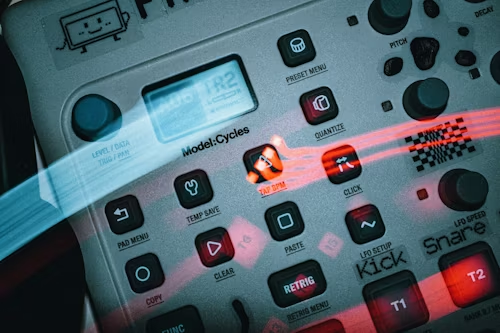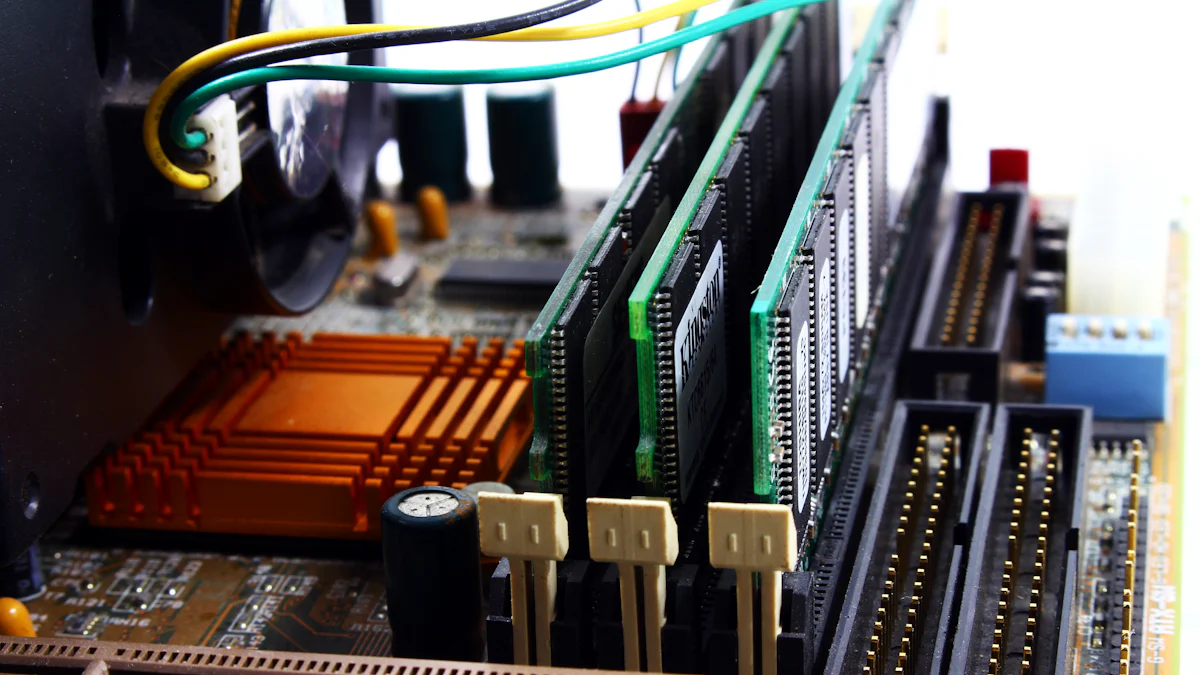In-Depth Analysis of USB Controllers: CYUSB3014-BZXI vs CYUSB3014-BZXC Selection Guide and Practical Applications

As an engineer with years of experience in embedded systems and high-speed data transfer, I know that selecting the right USB controller at the project outset is a critical step toward success. It's not just about glancing at the maximum data rate on a datasheet; it's about deeply understanding its electrical characteristics, environmental adaptability, and packaging details to ensure stable and reliable performance in real-world applications. Today, we're diving into two common SuperSpeed USB 3.0 controllers—the CYUSB3014-BZXI and CYUSB3014-BZXC. While they share the same lineage, their subtle differences can determine the success or failure of your project.
The USB controller market reached approximately $7.5 billion in 2022 and continues to grow, driven by rising demand for high-speed data transfer and advanced connectivity in industrial automation, medical imaging, consumer electronics, and more. Faced with a plethora of chip models, the ability to identify the most suitable one for your specific application is where our value as engineers truly lies.
1. Voltage Characteristics: A Trade-off Between Stability and Flexibility
Power is the foundation of all electronic systems, and USB controllers are no exception. The CYUSB3014 series showcases two distinct design philosophies in voltage handling.
CYUSB3014-BZXI: The Industrial-Grade Choice for Precision Voltage
The CYUSB3014-BZXI operates within a voltage range of 1.15V to 1.25V. This narrow and precise voltage window implies extremely high requirements for power supply stability. In my practice, such chips typically require high-performance Low-Dropout Regulators (LDOs) or Switch-Mode Power Supplies (SMPS), coupled with meticulous Power Integrity (PI) design to ensure power rail fluctuations stay within the allowable tolerance. For instance, when designing a high-precision industrial camera, I opted for the BZXI because it delivers exceptionally stable performance, avoiding interference with image acquisition caused by voltage noise. This stability is paramount in medical devices or precision measurement instruments with stringent data integrity requirements.
CYUSB3014-BZXC: The Consumer-Grade Solution with Wide Voltage Input
In contrast, the CYUSB3014-BZXC offers broader voltage support, ranging from 3.2V to 6V. This design significantly enhances flexibility in power supply design. In many consumer electronics products, such as external hard drive enclosures, USB docks, or simple embedded development boards, the power environment may not be as controlled as in industrial equipment. They might even be powered directly from the USB bus, which can have inherent voltage fluctuations. The wide voltage range of the BZXC allows it to better adapt to these "harsh" environments, reducing the complexity and cost of power design. I once used the BZXC in a battery-powered portable data acquisition device; its wide voltage capability effectively handled the challenge of dropping battery voltage, simplifying the power management unit design.
Engineer's Perspective: Selection Considerations
High-Precision/Industrial Applications: If your project demands extreme power supply stability and you are willing to invest more effort in power design and filtering, the BZXI's precision voltage characteristics are the ideal choice. It ensures stable and reliable data transfer, even under demanding conditions.
Consumer/Portable Applications: If your product needs to adapt to variable power environments, or you aim to reduce the complexity and cost of power design, the BZXC's wide voltage range will save you significant hassle. However, note that wide voltage tolerance does not mean you can ignore power quality; good filtering and decoupling remain fundamental for signal integrity.
2. Data Transfer Speed: The Common SuperSpeed Gene
In terms of data transfer speed, both controllers achieve the USB 3.0 standard of 5 Gbps (SuperSpeed), making them suitable for the vast majority of high-speed data transfer applications.
5 Gbps: More Than Just a Number
A theoretical bandwidth of 5 Gbps translates to roughly 625 MB/s of data transfer. This is crucial for applications like HD video streaming, high-speed data acquisition, and external SSD storage. However, as engineers, we all know there's often a gap between theoretical and real-world performance. Actual throughput is influenced by host controllers, cable quality, storage medium speed, driver efficiency, and operating system scheduling. From my experience, to fully leverage the 5 Gbps potential, we must focus on optimizing the entire data path, including:
Signal Integrity: Using high-quality USB 3.0 cables and ensuring proper impedance matching and differential pair routing on the PCB.
Firmware Optimization: Writing efficient firmware to reduce CPU overhead and data copy operations, utilizing techniques like DMA (Direct Memory Access).
Driver Software: Ensuring the latest, optimized USB 3.0 drivers are used.
Engineer's Perspective: Beyond Speed
Since both offer the same speed, choosing based on this metric is less critical. The real difference lies in their stability and reliability under different voltage and temperature conditions. A controller that can sustain 5 Gbps transmission in extreme environments is far more valuable than one that only achieves this speed under ideal conditions.
3. Operating Temperature: The Key to Harsh Environment Adaptation
Ambient temperature is a critical factor affecting the lifespan and stability of electronic components. The CYUSB3014-BZXI and CYUSB3014-BZXC also differ in their focus here.
CYUSB3014-BZXI: Conquering Extreme Cold and Heat
The CYUSB3014-BZXI has an operating temperature range of -40°C to +85°C. This broad industrial-grade range makes it ideal for extreme environments like outdoor equipment, automotive systems, industrial control panels, and military applications. In these scenarios, devices may need to withstand everything from frigid winters to scorching summers, or operate for extended periods in non-climate-controlled server rooms. The BZXI's wide temperature capability ensures stable operation under these harsh conditions, preventing performance degradation or functional failure due to overheating or extreme cold. I used the BZXI in a data logger deployed at an Arctic research station, where it performed flawlessly at -30°C, demonstrating its industrial-grade reliability.
CYUSB3014-BZXC: Focused on the Mainstream Consumer Market
The CYUSB3014-BZXC has an operating temperature range of 0°C to +70°C. This range covers the operational environment of most indoor and common consumer electronics. For products like laptops, desktop peripherals, and home routers, this temperature range is sufficient. In these applications, extreme temperature fluctuations are uncommon, allowing the BZXC to deliver satisfactory performance while maintaining cost-effectiveness.
Engineer's Perspective: The Environment Decides Everything
Industrial/Special Environments: If your product must operate reliably across a wide temperature range—e.g., on a factory floor, outdoor base station, or under a car hood—the BZXI's wide temperature capability is indispensable. Choosing it provides a solid foundation for long-term, stable operation.
Office/Home Environments: For consumer products operating in relatively mild conditions, the BZXC is a more cost-effective choice. However, even in these environments, thermal management design is essential to prevent the chip from operating at high temperatures for prolonged periods, thereby extending its lifespan.
4. Packaging: The Interplay of Space and Performance
The package form factor not only affects the chip's size but also directly impacts thermal performance, signal integrity, and PCB design complexity.
CYUSB3014-BZXI: The Compact TFBGA
The CYUSB3014-BZXI uses a 121-pin TFBGA (Thin-profile Fine-pitch Ball Grid Array) package. TFBGA is characterized by a finer pitch and thinner profile, making it highly suitable for space-constrained applications like ultra-thin portable devices or high-density PCBs. However, TFBGA packages are relatively more challenging to solder, requiring stricter PCB manufacturing processes and reflow profile tuning, often necessitating experienced SMT (Surface-Mount Technology) engineers for debugging.
CYUSB3014-BZXC: The Robust BGA
The CYUSB3014-BZXC uses a 121-ball BGA (Ball Grid Array) package. BGA packaging is renowned for its excellent thermal performance and electrical connection stability. The ball grid array provides more ground and power connections, helping to improve signal integrity and reduce Electromagnetic Interference (EMI). In SuperSpeed USB applications handling high-frequency signals and massive data streams, good signal integrity is paramount. BGA packages are also generally easier to rework, which is an advantage during prototyping and small-batch production.
Engineer's Perspective: Design and Manufacturing Considerations
Space-Constrained/High Integration: If your design has extreme size requirements, the BZXI's TFBGA package can help you achieve a more compact product. But be sure to assess your manufacturing capabilities to handle the soldering of such a fine-pitch package.
Performance-First/Ease of Manufacturing: If your design has higher requirements for thermal management and signal integrity, or you wish to reduce manufacturing and rework risks, the BZXC's BGA package is a safer bet. In many high-performance computing and communication devices, BGA is the preferred package.
5. Application Scenarios: Tailored Solutions
Synthesizing the above characteristics, we can more clearly outline the typical application profiles for these two chips.
CYUSB3014-BZXI: The Cornerstone for Industrial and Professional Fields
Thanks to its precise voltage requirements and wide temperature range, the BZXI excels in industrial automation, medical devices, high-precision measurement instruments, military products, and embedded systems requiring USB host/device functionality. Examples include:
Industrial Cameras/Machine Vision: On automated production lines, cameras need to operate stably for long periods under varying temperatures. The BZXI's industrial-grade traits ensure reliable image data transfer.
Medical Diagnostic Equipment: Devices like ultrasound machines and endoscopes have extremely high demands for data integrity and stability. The BZXI provides reliable connectivity that meets medical standards.
Data Loggers/Sensor Hubs: When collecting data in harsh environments, the BZXI guarantees data is neither lost nor corrupted.
CYUSB3014-BZXC: The Preferred Choice for Consumer Electronics and High-Performance Peripherals
With its wide voltage range and robust BGA package, the BZXC is ideal for consumer electronics, high-performance USB peripherals, multimedia devices, and general embedded systems requiring SuperSpeed USB device control. Examples include:
USB 3.0 HDD Enclosures/SSD Peripherals: Require fast, stable transfer of large data volumes while adapting to different host power environments.
HD Video Capture Cards: Handle uncompressed video streams, demanding high bandwidth and good signal integrity.
VR/AR Devices: Require low-latency, high-bandwidth transfer of sensor data and video streams.
High-Speed Data Acquisition Cards: In lab or test environments, they need to transfer sensor data to a PC at high speed for analysis.
Conclusion: The Right Choice Stems from a Deep Understanding of Requirements

The CYUSB3014-BZXI and CYUSB3014-BZXC are not a simple case of one being better than the other. They are differentiated solutions from Cypress (now part of Infineon) targeting different market needs. As engineers, our task is not to blindly pursue the highest performance but to deeply understand our project requirements, including:
Operating Environment: Temperature, humidity, EMC requirements.
Power Conditions: Supply voltage range, stability, ripple requirements.
Space Constraints: Product size, PCB layout density.
Budget: Chip cost, BOM cost, manufacturing, and testing costs.
Reliability & Lifespan: Product expected lifetime, failure rate requirements.
By comprehensively evaluating these factors against the detailed parameters of both chips, you can make the most informed decision. Remember, there is no "best" chip, only the chip that is "most suitable" for your project. Delving into every technical detail and correlating it with practical application scenarios is the true value we bring as engineers. I hope my experience sharing helps you confidently select the right USB controller for your future projects, ensuring their success!
References:
[1] Cypress Semiconductor. *CYUSB3014-BZXI Datasheet*. (Please refer to the latest official datasheet)
[2] Cypress Semiconductor. *CYUSB3014-BZXC Datasheet*. (Please refer to the latest official datasheet)
[3] USB Implementers Forum. Universal Serial Bus 3.0 Specification. https://www.usb.org/
[4] MarketsandMarkets. USB Peripheral Controllers Market. (Please refer to relevant market research reports)
See Also
Implementing ATA5824C for Remote Control System Integration
Revolutionizing Industrial Automation with XCF01SVOG20C
Key Features of SPC5605BMLL6 and SPC5607BMLL6 ECUs
Effortless Engine Control Solutions with SPC56 Microcontrollers
CALL US DIRECTLY
(+86)755-82724686
RM2508,BlockA,JiaheHuaqiangBuilding,ShenNanMiddleRd,Futian District,Shenzhen,518031,CN
www.keepboomingtech.com sales@keepboomingtech.com
